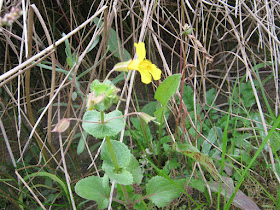I went to the river today and decided to take the camera. I just posted about this trail and thought pictures would be nice. It was very overcast so some pictures may be a little dark. Hard to believe its the middle of November and some plants are blooming and berries are still ripening. I love winters here. Enjoy the show!
 |
| A patch of horsetail equisetum. Famous for its high silica content. |
 |
| A jungle of California grape Vitis californica. The trees are mostly valley oak. |
 |
| See the tiny clams? |
 |
| Better? |
 |
| Macro setting. There are millions upon millions of these. I heard they are an invasive species. |
 |
| American coots. |
 |
| More American coots doing what coots do. |
 |
| Curly dock or sorrel. Rumex crispus, common on the river banks. Also known as wild rhubarb because of its sour taste. This is because of the high oxalic acid content just like rhubarb. Rhubarb is related to the docks. |
 |
| Late season elderberries. Sambucus mexicana. There are even new flowers blooming. |
 |
| A common sight on the trail. |
 |
| Smart weed, knot weed, bistort, ladys thumb print, etc. Polygonum sp. The plant and seeds were used for food by Native Americans. |
 |
| Polygonum sp. Nice shot of the flowers. Pinkish ones are oldest. |
 |
| Polygonum sp. Note the dark mark on the leaves. This is where ladys thumb print comes from. |
 |
| A month ago this was all water. It doesn't take long for the plants to take over. This is mostly knot weed and cockle burr. |
 |
| Mint, species unknown. very pungent! |
 |
| Mint close up. |
 |
| Mistletoe infesting cottonwood trees. These can kill a healthy tree as well as cause limb breakage. |
 |
| Same as above from a little farther away. |
 |
| Monkey flower in bloom. Mimulus guttatus. |
 |
| Monkey flower from top side. |
 |
| Monkey flower side view. |
 |
| A nice stand of stinging nettles. Urtica dioica. I harvested quite a bit of nettle this year. Plants are in the 8 to 12 foot range. Incredible! Lots of good cordage. |
 |
| Pennyroyal, Mentha pulegium. A very pungent member of the mint family and an invasive species. |
 |
| Pennyroyal. |
 |
| Pennyroyal. The bees love to hit this plant. |
 |
| Sow thistle, Sonchus asper, with curly dock. The sow thistle is the plant with yellow flowers. The larger leaves at the bottom of the plant are edible but contain bitter properties. Its an invasive species. |
 |
| Heres a shot looking east. The river is back to about 1/4 capacity. With more rain in the Sierra's it may get back to full capacity. |
 |
| A view towards the west. The main channel is on the other side in the distance. |
 |
| This is the dirt part of the trail. The paved section is on top the berm to the right. |
 |
| Cliff swallow nests under a bridge. |
 |
| Tree tobacco, Nicotiana glauca. An extremely toxic invasive species. The leaves can be boiled for an hour and added to a biodegradable detergent. This mixture makes an excellent natural bug killer and repellent for the garden. Don't get any on your skin! |
 |
| Close up of tree tobacco flowers |
 |
| Tree tobacco. The bent over look is an identification feature as well as the green trunk and distinctive color of the leaves. Its very poisonous (very high nicotine content) and should not be used as a tobacco substitute. |
 |
| A wild bee hive at the base of this bent over oak. I watched these little ones for quite a while. They are still gathering from the plants that are still flowering. November honey. Who would imagine? |


































No comments:
Post a Comment
Please feel free to comment! I will answer any questions you have.